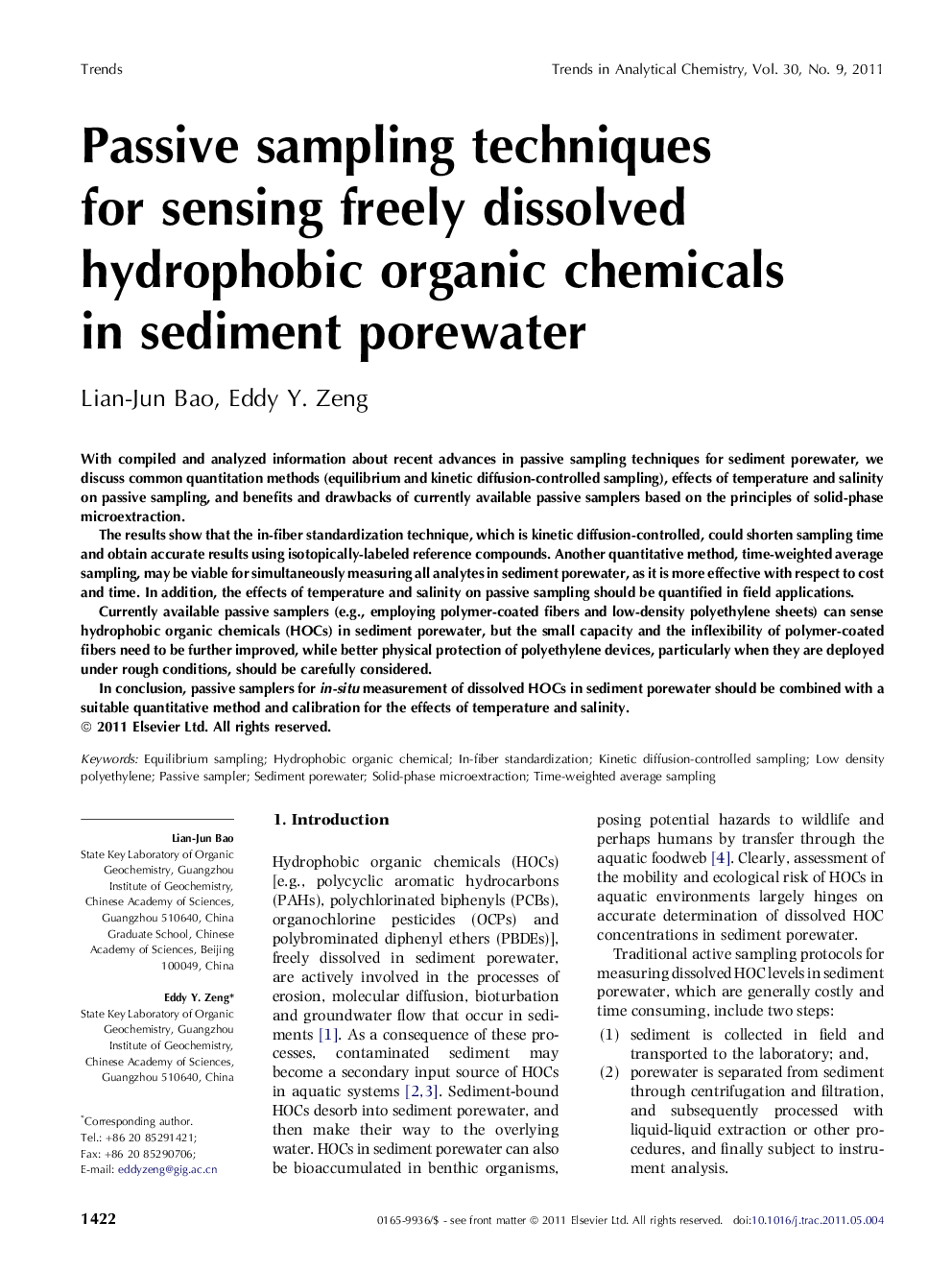| Article ID | Journal | Published Year | Pages | File Type |
|---|---|---|---|---|
| 1248370 | TrAC Trends in Analytical Chemistry | 2011 | 7 Pages |
With compiled and analyzed information about recent advances in passive sampling techniques for sediment porewater, we discuss common quantitation methods (equilibrium and kinetic diffusion-controlled sampling), effects of temperature and salinity on passive sampling, and benefits and drawbacks of currently available passive samplers based on the principles of solid-phase microextraction.The results show that the in-fiber standardization technique, which is kinetic diffusion-controlled, could shorten sampling time and obtain accurate results using isotopically-labeled reference compounds. Another quantitative method, time-weighted average sampling, may be viable for simultaneously measuring all analytes in sediment porewater, as it is more effective with respect to cost and time. In addition, the effects of temperature and salinity on passive sampling should be quantified in field applications.Currently available passive samplers (e.g., employing polymer-coated fibers and low-density polyethylene sheets) can sense hydrophobic organic chemicals (HOCs) in sediment porewater, but the small capacity and the inflexibility of polymer-coated fibers need to be further improved, while better physical protection of polyethylene devices, particularly when they are deployed under rough conditions, should be carefully considered.In conclusion, passive samplers for in-situ measurement of dissolved HOCs in sediment porewater should be combined with a suitable quantitative method and calibration for the effects of temperature and salinity.
